If you are facing random errors in your apps especially related to disk reading or writing, this can indicate an error on your drive. The disk drive's partition might be marked dirty due to an improper shutdown, or due to corruption or bad sectors. In this article, we will review various methods to check your drive for errors.
Advertisеment
You can check your drive (HDD or SSD) for errors using the chkdsk console utility, PowerShell, File Explorer and the classic Control Panel. Before proceeding, ensure that your user account has administrative privileges.
Check a Drive for Errors in Windows 10 with ChkDsk
Chkdsk is the built-in console tool in Windows to check and fix file system errors. It starts automatically when Windows is booting if your hard drive partition was marked dirty. The user can start it manually if he connects an external drive or wants to check an existing local partition or drive for errors manually. Here is how it can be done.
To check a Drive for Errors in Windows 10, do the following.
- Open an elevated command prompt.
- Type or copy-paste the following command:
chkdsk C: /F
The command will check your drive C: for errors and attempt to fix them automatically.
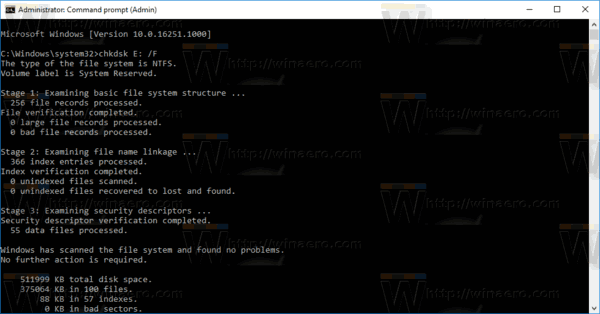
- The following command will try to recover information from bad sectors:
chkdsk C: /F /R
Tip: See How to find chkdsk results in Windows 10.
You can learn about chkdsk command line arguments by running it with the /? switch as follows.
chkdsk /?
The output will be as follows: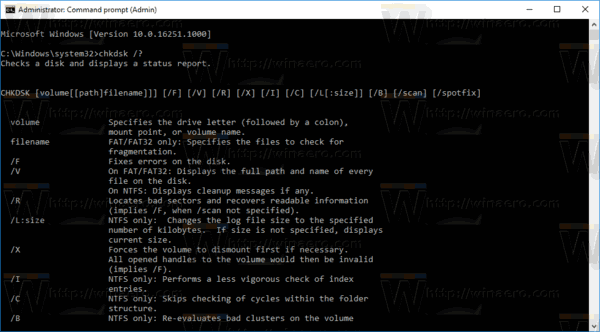
Check a Drive for Errors in Windows 10 with PowerShell
Modern PowerShell versions come with a special cmdlet to check your drive for errors. Here is how it can be done.
- Open PowerShell as Administrator.
Tip: You can add "Open PowerShell As Administrator" context menu. - Type or copy-paste the following command:
Repair-Volume -DriveLetter C
The command above will check your drive C: for errors.

- To take the drive offline (prevent app writes during check and lock it), execute the command with the argument OfflineScanAndFix:
Repair-Volume -DriveLetter C -OfflineScanAndFix

Check a Drive for Errors in Windows 10 from File Explorer
- Open This PC in File Explorer.
- Right click the drive you would like to check for errors and select "Properties" in the context menu.
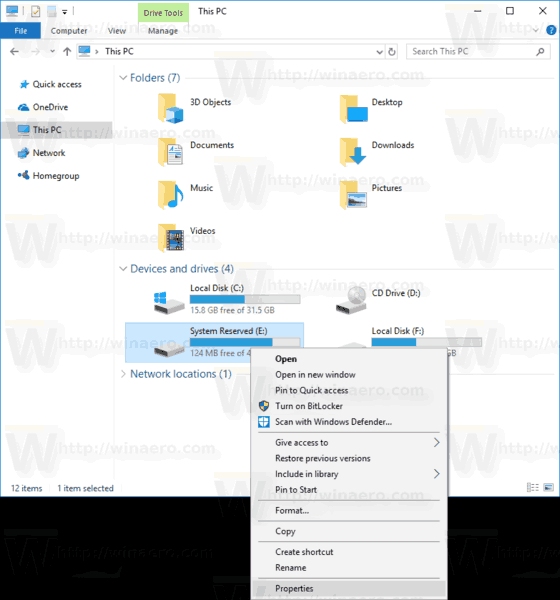
- In the Properties dialog, switch to the Tools tab. Click the button "Check" under "Error checking".
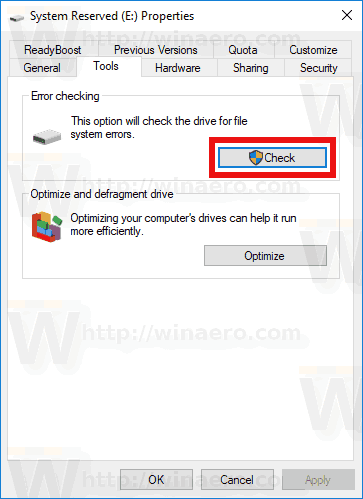
- In the next dialog, click "Scan drive" or "Repair drive" to start the operation.
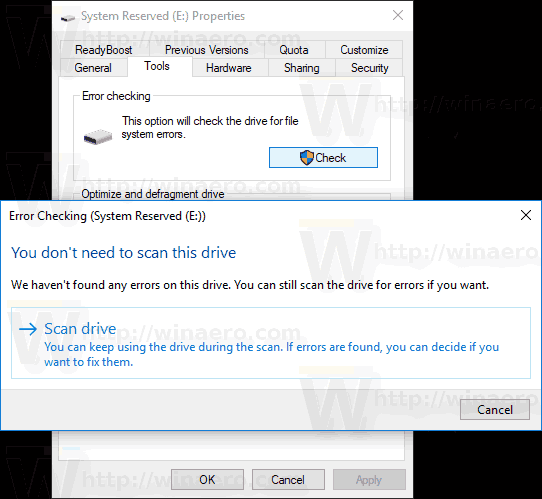
Check a Drive for Errors in Windows 10 using Control Panel
As of this writing, the classic Control Panel in Windows 10 still comes with a number of options and tools which are not available in Settings. It has a familiar user interface which many users prefer over the Settings app. You can use Administrative tools, manage user accounts on the computer in a flexible way, maintain data backups, change the functionality of hardware and many other things. You can pin Control Panel applets to the taskbar to access frequently used settings faster.
To check a drive for errors using the Control Panel, do the following.
- Open the classic Control Panel app.
- Go to Control Panel\System and Security\Security and Maintenance. It looks as follows (the screenshot below is from Windows 10 Creators Update version 1703):
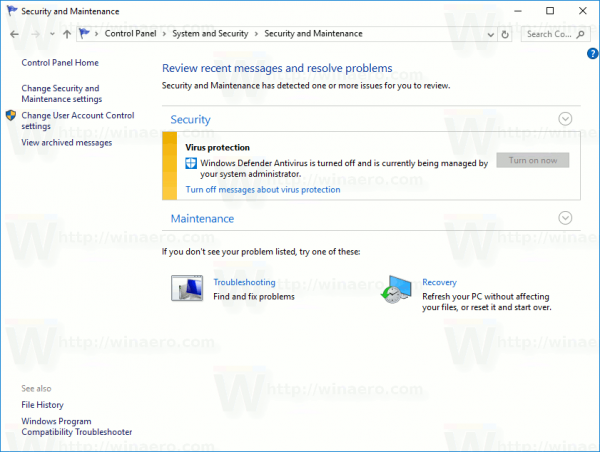 Note: In the screenshot above, you can see Windows Defender's Antivirus disabled on my PC. If you need to learn how I disabled it, refer to the article: Disable Windows Defender in Windows 10.
Note: In the screenshot above, you can see Windows Defender's Antivirus disabled on my PC. If you need to learn how I disabled it, refer to the article: Disable Windows Defender in Windows 10. - Expand the Maintenance box to see related controls.
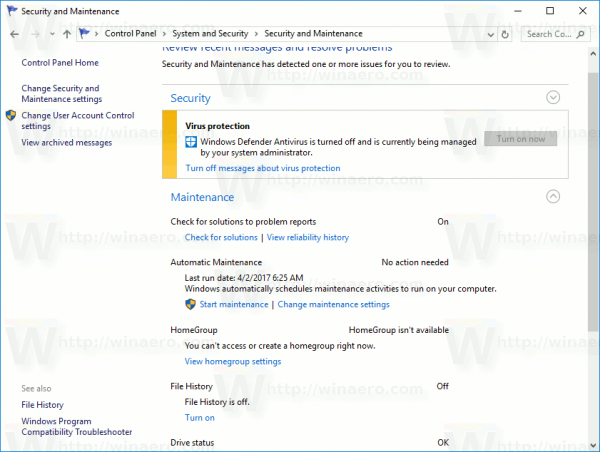
- See the "Drive status" section. If any of your disks have issues, there will be an option to scan and fix them.
Note #1: If a partition or a drive you are trying to check is busy (i.e. in use by the OS), then you will be prompted to schedule the scan and fix procedure for the drive at boot on the next restart. See Change the Chkdsk timeout at Windows 10 boot.
Note #2: ReFS doesn't require checking a file system for errors. It comes with an automatic data integrity mechanism.
Support us
Winaero greatly relies on your support. You can help the site keep bringing you interesting and useful content and software by using these options:
